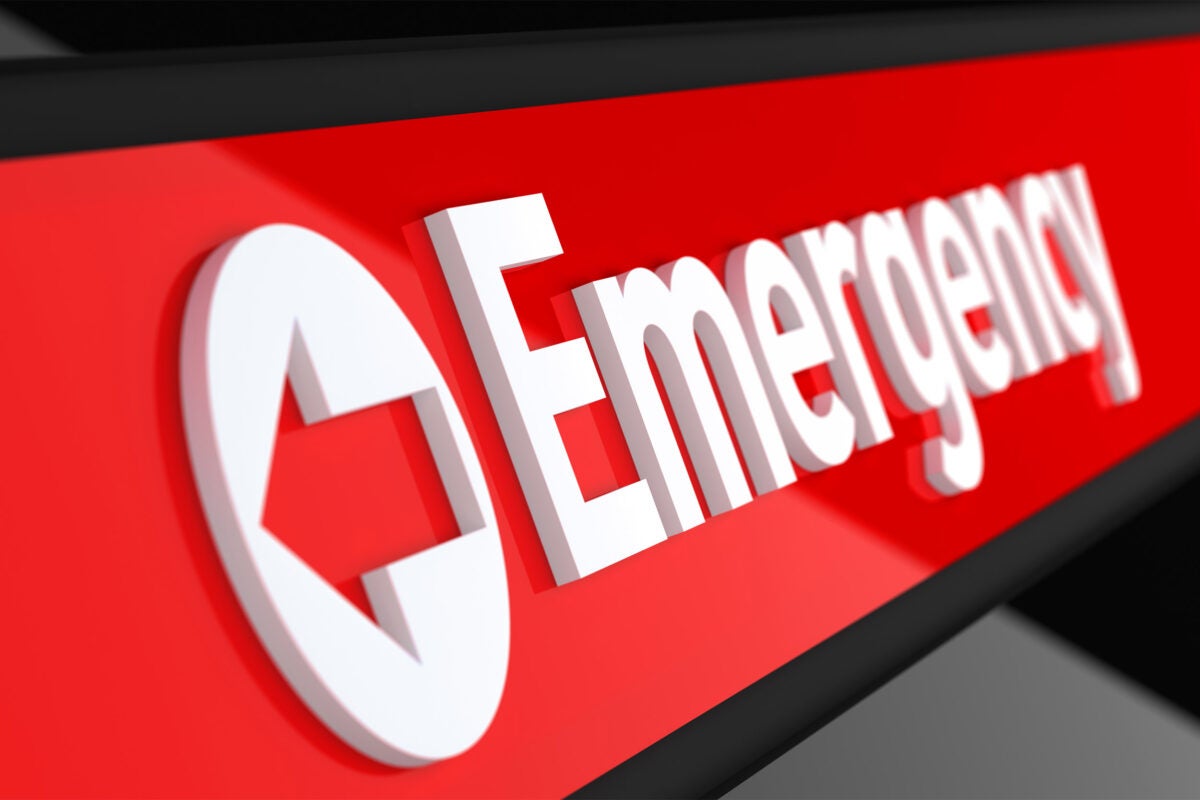This is part of our Coronavirus Update series in which Harvard specialists in epidemiology, infectious disease, economics, politics, and other disciplines offer insights into what the latest developments in the COVID-19 outbreak may bring.
Most American public schools will be bringing students back in the fall, a Harvard healthy buildings expert said, and districts should employ a broad risk-reduction strategy proven effective in places like hospitals — where maintaining appropriate distancing isn’t always possible — to keep them safe.
Joseph Allen, assistant professor of exposure assessment science at the Harvard T.H. Chan School of Public Health, said while the goal should be zero COVID-19 cases in schools and elsewhere, the national containment strategy has failed. That leaves school officials facing a difficult decision as to whether schools can be reopened safely in the fall despite continued community transmission of SARS-CoV-2, the virus that causes COVID-19.
Allen’s answer is a qualified yes: There will be some risk, but it can be kept relatively low as long as schools foster a culture of healthy compliance among students, employ an array of strategies designed to keep students, teachers, and staff safe, and isolate outbreaks when they occur.
“There’s certainly no such thing as zero risk in anything we do, and that is certainly the case during a pandemic,” Allen said. “[But] the U.S. has failed to put in the systems necessary to keep case counts low, and we’re forced to navigate reopening businesses, reopening society — not in a place where we want to be or should be — but facing the reality we have.”
The healthy school reopening measures are outlined in a 62-page report, “Schools for Health: Risk Reduction Strategies for Reopening Schools,” released Wednesday by the Harvard Chan School’s Healthy Buildings Program, which Allen leads.
Allen said the virtual classrooms employed in much of the country in March and April were a stopgap made necessary by the speed of the pandemics’ spread. But they also showed the importance of returning to in-person schooling. The experience in several big cities showed that substantial numbers of students did not log in regularly, risking a generation of not just virtual absentees, but virtual dropouts. In Boston, for example, 20 percent of students didn’t log in to class at all in May. In Philadelphia, only half of elementary schoolkids made daily contact with their classes.
Online learning should continue to be part of every districts’ reopening plan, Allen said, but it should be aimed at a minority of students and teachers, those ill or at high risk of suffering severe COVID-19 illness. Most kids, he said, should be in school, where they can grow not only through in-person learning, but also from the host of other benefits that schools bestow, from socialization to exercise to nutrition for students from struggling families. Reopening schools also allows parents to return to work — an important benefit as the economy struggles to regain its footing.
“There are devastating costs of keeping kids out of school,” said Allen, who outlined the report during a conference call with reporters Wednesday morning. “When we have this discussion about sending kids back to school, we have to have it in the context of the massive individual and societal costs of keeping kids at home.”
The “Schools for Health” report offers a detailed reopening plan with more than 100 suggestions in five major categories: healthy classrooms, healthy buildings, healthy policies, healthy schedules, and healthy activities. Though many schools have only recently let out for the summer, Allen said, now is the time for school officials to begin to prepare for the fall. Allen said flexibility is important in adopting the recommendations and that, as the weeks pass, school officials should be looking for changes to the science of COVID-19 or the local pandemic that might affect their plans.
The report’s 13 authors, led by Allen, warn that even if schools follow all the recommendations, infections may occur. But the guidelines recommend routine steps that will create a schoolwide system based on discrete groups, increased fresh air, distancing where possible, and the standbys of masking and handwashing that will minimize spread when cases do occur.
While Allen does not recommend that schools employ A/B days, when half of students are learning in person and half at home, he does recommend employing a flexible daily schedule that may start earlier and end later, creating leeway to stagger class times to avoid crowded hallways and facilitate pickup and drop off of students without crowding.
A key factor at hospitals, where masking, handwashing, and other infection-control measures have proven effective, is near-universal compliance. Allen acknowledged that may be difficult when dealing with children, which is why creating a schoolwide culture of compliance will be important to success. Healthy messages should be reinforced in pre-opening-day training programs, during daily morning announcements, and repeatedly through the day via school posters and other communication strategies.
“[Compliance] is going to be the biggest challenge,” Allen said. “The most important recommendation we have … is that schools have to establish and reinforce a culture of health, safety, and shared responsibility. This is really the only way we’re going to get through this. We have to move from the place where mask-wearing and handwashing is the exception to where it’s the norm.”





